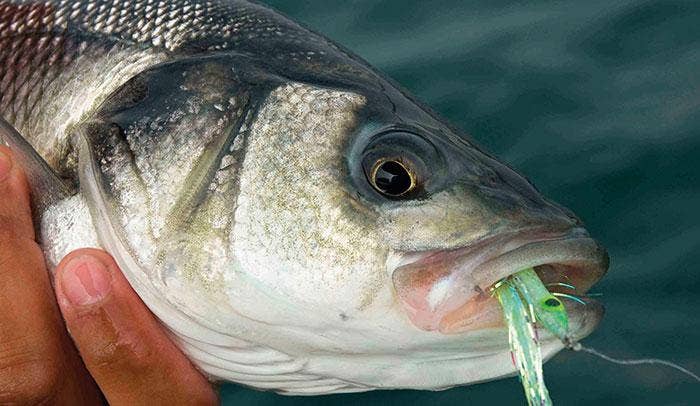There are a few things to keep in mind when fishing for sea bass. First, sea bass tends to congregate around reefs and other underwater features, so targeting these areas is a good place to start. Second, baitfish are a key part of the sea bass diet, so using baitfish as lures or live bait is likely to be effective. And finally, sea bass can be caught using a variety of techniques including casting, jigging, and bottom fishing.
When it comes to tackling, relatively light tackle is typically used when fishing for seabass. This includes a 20-30lb test line on spinning or baitcasting reels spooled with an 8-12lb monofilament or braided line. A medium-sized spinning or baitcasting rod in the 6-8ft range is a good choice. Lures that imitate baitfish are generally the most successful, such as jigs, plugs, and spoons. For bait, anchovies, sardines, and squid are all effective.
When it comes to fishing for sea bass, there is no one-size-fits-all answer. However, by targeting reefs, using baitfish as lures or bait, and using light tackle, you’ll be well on your way to catching these popular gamefish. More information is based on my experience in this article – “Sea Bass – Habitats And Basic Fishing Methods“.
Fishing for Sea Bass can be done using a variety of different techniques depending on where they are located and what time of year it is. In general, Sea Bass will bite at just about any bait because they are opportunistic feeders that consume small organisms as well as larger prey items. During the spring and summer months when they are located in shallower water, Sea Bass can be caught with lures like spoons and plugs. When they move to deeper water in the fall and winter, it is best to use heavy tackle and fish near the bottom. Some good baits for Sea bass include live eels, cut bait, and squid.
When fishing for Sea Bass, it is important to be very patient as they can be quite finicky at times. Once you hook a fish, make sure to reel it in slowly and steadily; if you try to rush the process, you are likely to lose the fish.
If you are bottom fishing, a 3-way swivel rig is often used with two hooks baited with squid, crab, or worms. The third hook on the swivel can be left empty, or it can be baited with a small jig or spinner. When fishing for sea bass, it is important to use heavy tackle as they can be quite large and powerful fish.
Sea bass is typically bottom-dwellers, so the best way to catch them is by fishing close to the bottom. In general, they can be found on reefs and among rocks. If you are fishing in open water, it is best to use a down-rigger to get your bait down to where the fish are.
When using live bait, make sure to keep it moving by using a cast net or by jigging it up and down. This will entice the sea bass to bite. Be patient when fishing for sea bass, as they can be quite elusive at times. If you are using cut bait or lures, make sure to vary your speed and direction often to keep the fish guessing. Reeling in too fast or jerking the bait will often result in a missed fish.

Now that you know where to find sea bass and what tackle to use, it’s time to start fishing! Fishing for sea bass can be done using a variety of methods, but one of the most popular is simply casting a bait out and waiting for a bite. Another common method is jigging – this involves using a lure that is rapidly jerked up and down in the water in order to mimic the movement of a small fish. Whichever method you choose, be sure to pay attention to your line – sea bass are notorious for their powerful strikes, and if you’re not paying attention you may miss the bite entirely.
Fishing for sea bass can be an incredibly rewarding experience, and following these tips will help you to get the most out of it. Be sure to check local regulations before heading out, as there may be limits in place on the size or number of fish that you’re able to keep. And, most importantly, have fun! Fishing is supposed to be enjoyable, so don’t forget to relax and enjoy yourself while you’re out on the water.
Please login or Register to submit your answer
